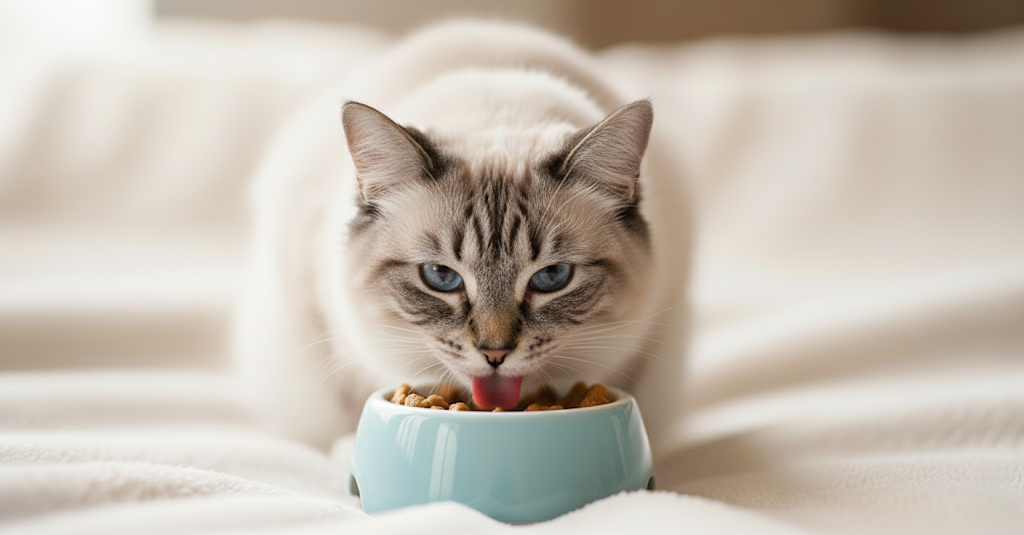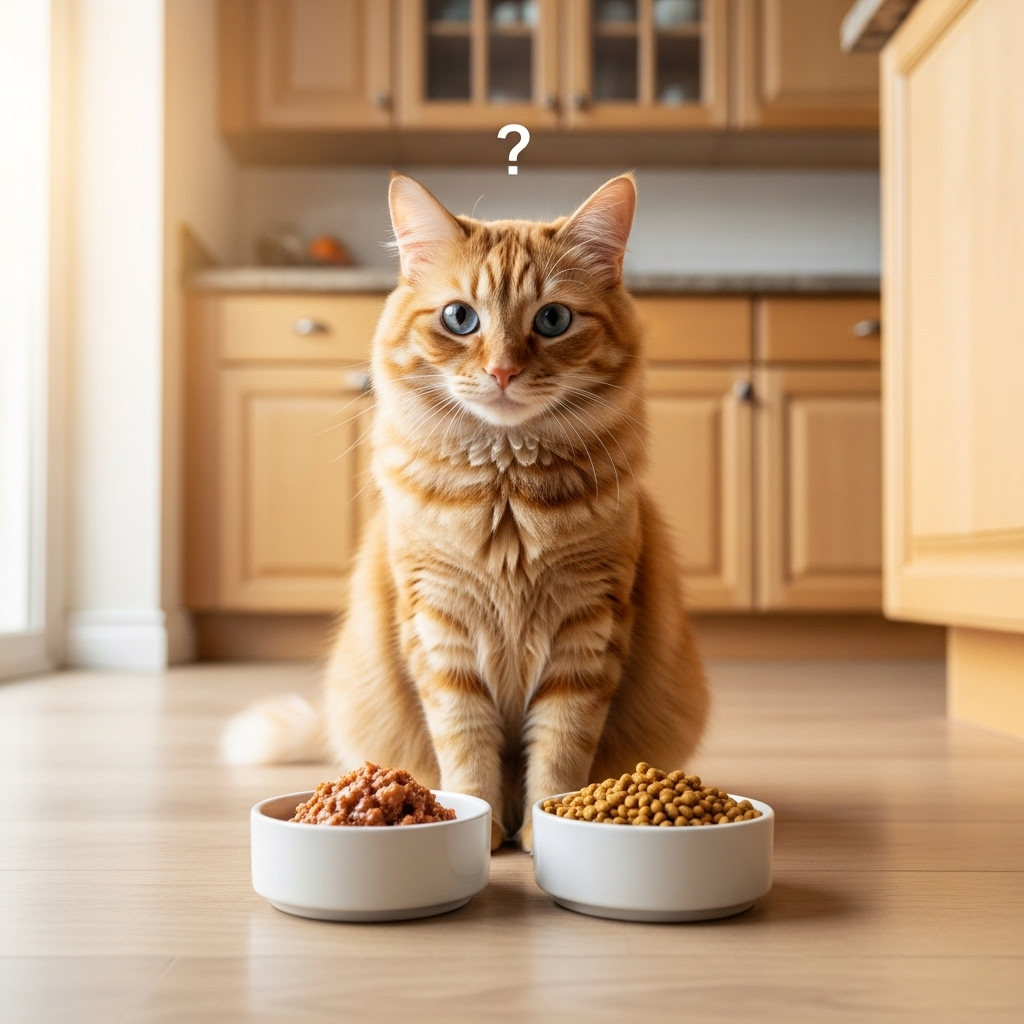
Bringing home a 4-month-old kitten is exciting, but many cat parents face the same challenge: what is the best food for a 4-month-old kitten? At this stage, kittens are in a rapid growth phase and need the right nutrition to build strong bones, healthy muscles, and a resilient immune system. Feeding them correctly now will influence their long-term health and development.
Why Nutrition Matters at 4 Months
At four months, kittens are full of energy. Their bodies are still developing, which means they need more calories, protein, and specific nutrients compared to adult cats. If the diet is unbalanced, kittens may experience slow growth, weak bones, or digestive issues.
Veterinarians generally recommend specially formulated kitten food because it provides:
- Higher protein levels (30–40%) to support muscle development.
- Healthy fats (15–20%) for energy and vitamin absorption.
- Essential nutrients like taurine, calcium, phosphorus, and omega-3s for heart, vision, and brain development.
Wet Food vs. Dry Food for 4-Month-Old Kittens

Both wet and dry foods can be suitable, but each has pros and cons:
Wet Food:
- Keeps kittens hydrated.
- Easier to chew and digest.
- Stronger aroma and flavor encourage picky eaters.
Dry Food:
- More convenient to store and serve.
- Helps with dental health.
- Usually more calorie-dense, which supports growth.
👉 The best approach is often a combination feeding plan. Mixing wet and dry food provides hydration, variety, and complete nutrition. For more on this, see [Internal Link 1].
What to Look for in the Best Kitten Food
When choosing the best food for a 4-month-old kitten, check the label for:
- AAFCO Statement: Look for “Complete and Balanced Nutrition for Kittens.”
- High-Quality Protein Sources: Chicken, turkey, or fish as the first ingredient.
- No Harmful Fillers: Avoid foods with excessive corn, soy, or artificial additives.
- Added DHA & Taurine: Critical for brain, eye, and heart development.
Here’s a quick comparison table to help:
| Nutrient | Recommended Range | Function |
|---|---|---|
| Protein | 30–40% | Growth, muscle, tissue repair |
| Fat | 15–20% | Energy, vitamin absorption |
| Calcium & Phosphorus | Balanced ratio | Strong bones, teeth |
| Taurine | Essential amino acid | Heart & vision health |
| Omega-3 (DHA) | Included | Brain & eye development |
How Much to Feed a 4-Month-Old Kitten
Portion size depends on the brand and your kitten’s activity level. As a guideline:
- Offer 3–4 small meals per day.
- Follow the feeding chart on the food package.
- Adjust portions if your kitten seems underweight or overweight.
Kittens are natural grazers, so leaving out a small amount of dry food between meals can also work.
Why “picky eating” isn’t always what it looks like
Owners love to humanize this behavior: “My kitten is just fussy like me with vegetables.” But in reality, true pickiness in kittens is rare compared to underlying causes. What looks like fussiness is often a symptom of stress, medical issues, or owner-created feeding mistakes.
Sub-topics Expanded
- Natural vs. Learned Behavior
- Cats in the wild aren’t “picky.” They eat what they hunt or scavenge.
- In domestic settings, “pickiness” often emerges because owners keep swapping foods too frequently, creating an expectation of novelty.
- Some kittens may have early-life imprinting: if they were weaned onto one type of texture (e.g., dry kibble only), they might resist wet food later—not out of preference but lack of exposure during the critical window (3–6 weeks old).
- Health Red Flags
- Dental pain, parasites, GI inflammation, or viral infections can suppress appetite.
- Kittens have higher metabolic demands—going even 12–24 hours without food can risk hypoglycemia.
- Studies show that what owners call “picky” sometimes correlates with subclinical illness (e.g., mild stomatitis, early URI).
- Environmental Factors
- Cats are solitary hunters; a loud or high-traffic feeding area can stress them out.
- Bowl placement near the litter box or strong kitchen odors may reduce appetite.
- Dirty bowls or residual soap can alter food smell/taste drastically (cats’ olfactory sensitivity is ~14x stronger than humans).
- Dietary Monotony & Owner Habits
- While kittens need consistency for digestion, an overly monotonous diet can backfire by creating rigid preferences.
- Owners often free-feed kibble, leaving it stale, then complain the kitten is “fussy.”
- Overfeeding treats or human scraps conditions the kitten to reject balanced meals.
Suggested Structure for the Guide
Actionable Checklist: Practical steps (rotate textures early, keep bowls spotless, rule out illness, control environment).
Hook: Challenge the reader—“Is your kitten truly picky, or is it trying to tell you something?”
Section 1: Natural vs. Learned Behavior (early-life imprinting + owner habits).
Section 2: Warning Signs of Illness (symptoms checklist, when to see vet).
Section 3: Environmental Factors (placement, cleanliness, sensory overload).
Section 4: Feeding Mistakes Owners Create (monotony, overfeeding treats, food switching).
Transitioning to Cat Food Later
At this age, stick with kitten-specific food. Transitioning to adult cat food too early can cause nutrient deficiencies. Most vets recommend waiting until 12 months old before switching. For a detailed guide, check [Internal Link 2].
Real-World Example
One cat parent shared that their 4-month-old kitten, Luna, was struggling with diarrhea on generic supermarket food. After switching to a high-protein, grain-free kitten formula recommended by their vet, Luna’s digestion stabilized, her coat became shinier, and she gained healthy weight within weeks. This shows how the right food choice can make an immediate difference.
Final Thoughts
The best food for a 4-month-old kitten is one that provides high-quality protein, balanced nutrients, and supports hydration. A mix of wet and dry kitten food usually works best. Always check labels, monitor your kitten’s growth, and consult your vet for personalized recommendations.
For more professional nutrition advice, visit [Pet Food].

[…] 👉 If your pet is four months old, see: [Best Food for a 4-Month-Old Kitten]. […]
[…] Don’t give in to constant food switching. Instead, try different textures or flavors, and avoid leaving food out for too long. [See our guide to dealing with picky eaters → [picky eating]. […]